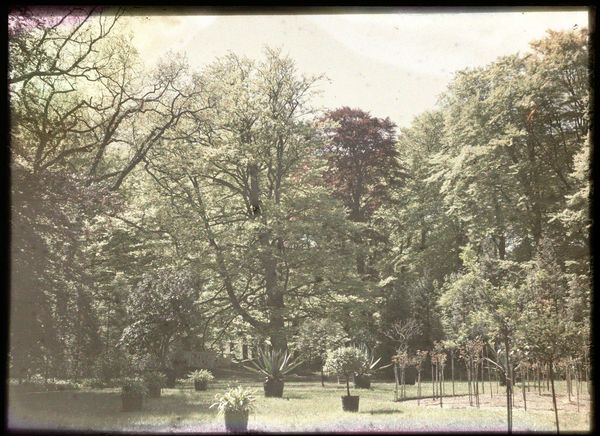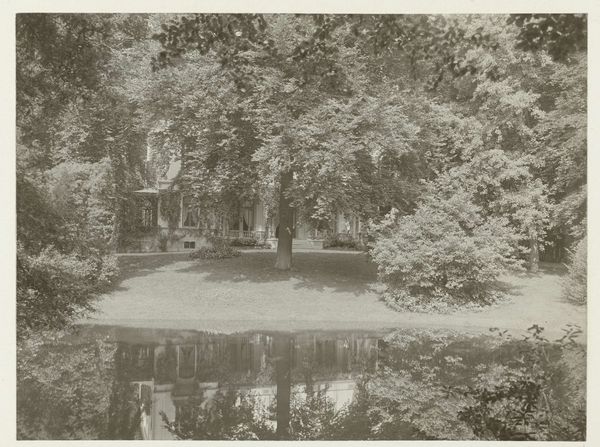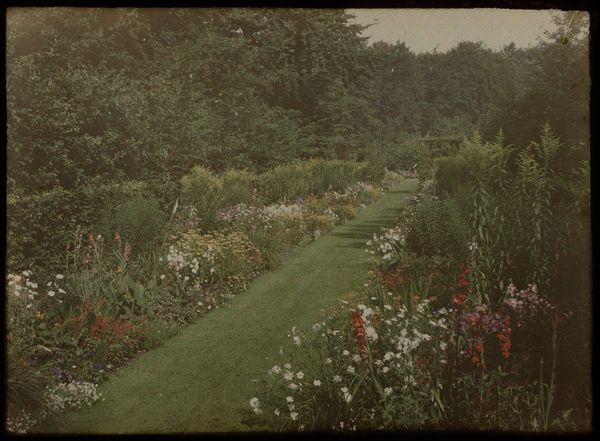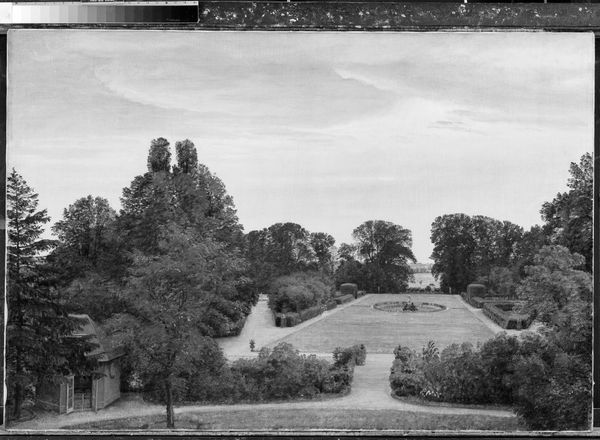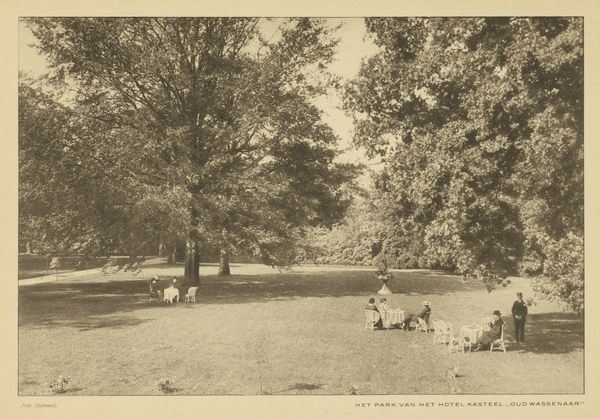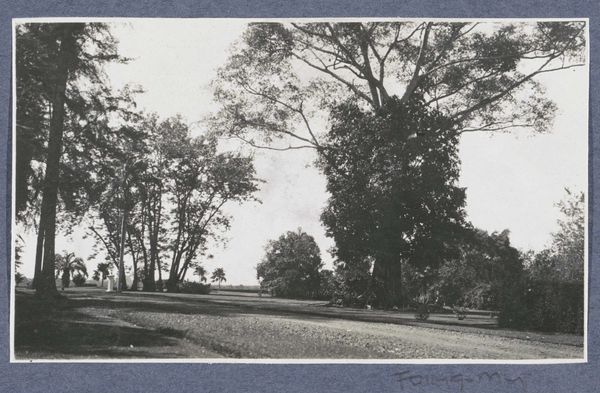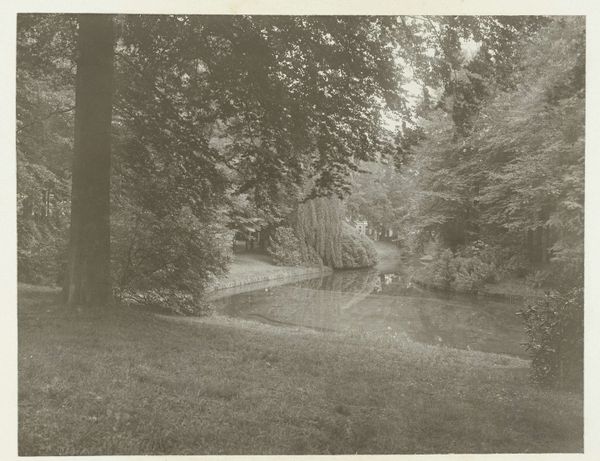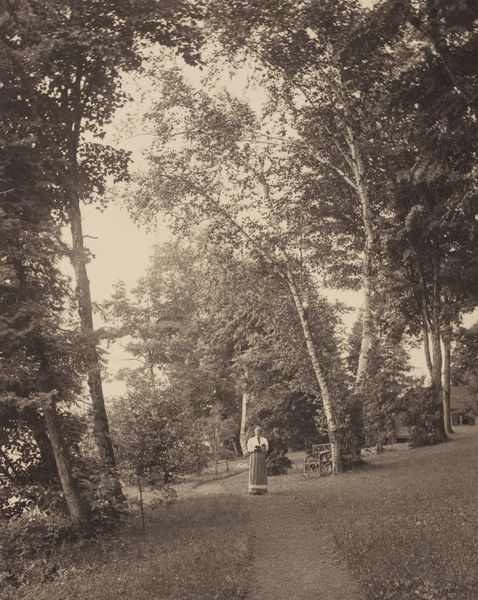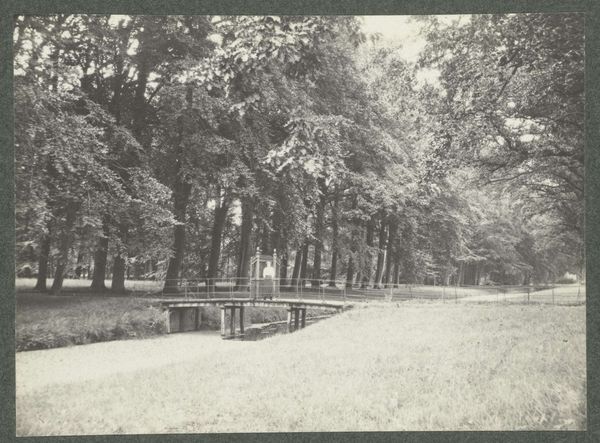
plein-air, photography
#
plein-air
#
landscape
#
photography
Dimensions: height 89 mm, width 118 mm
Copyright: Rijks Museum: Open Domain
Curator: Looking at "Gezicht in een park", which translates to "View in a Park," we have a photographic landscape, thought to have been created sometime between 1907 and 1930 by Adolphe Burdet. The artwork is currently housed at the Rijksmuseum. Editor: It's immediately calming. The gentle winding path pulls the eye deep into the composition, promising quiet and seclusion. The hazy tonality really supports this effect. Curator: Indeed. Notice how Burdet uses the S-curve of the path not only to draw us in but also to divide the composition. On one side, we have masses of richly colored rhododendrons. Editor: Almost a riot of color. The contrast with the monochromatic path creates a fascinating visual tension, the blooms symbolize beauty but in photography and in painting are strongly linked with fragility. Curator: Quite. The darker greens mass towards the top, which presses downwards somewhat, it’s interesting to note how much tonal similarity there is between the canopy, sky and the path. This flattened field almost creates a shallow depth, and the photographic methods have really muted tones throughout, further compressing perspective. Editor: I would suggest the lack of perspective is an indication of both passing of time and nostalgia – the photograph becomes dream-like, almost a memory of a time or place, or even feeling of the subject of the photograph. The gate at the top right could therefore indicate change or challenge; and its colour is indicative of peace and harmony. Curator: I think that the overall impact of the photograph relies quite strongly on tonal relationships – this quiet park vista is not spectacular as an individual park-like area, but more how it makes the audience contemplate what they are observing due to tone, depth and texture. Editor: For me, it echoes a time when leisure was prioritized, and nature was considered as a means of contemplative refuge, however for both to coincide is extremely rare to experience. It prompts us to consider our cultural relationship with the natural world and it’s significance in our memory.
Comments
No comments
Be the first to comment and join the conversation on the ultimate creative platform.
